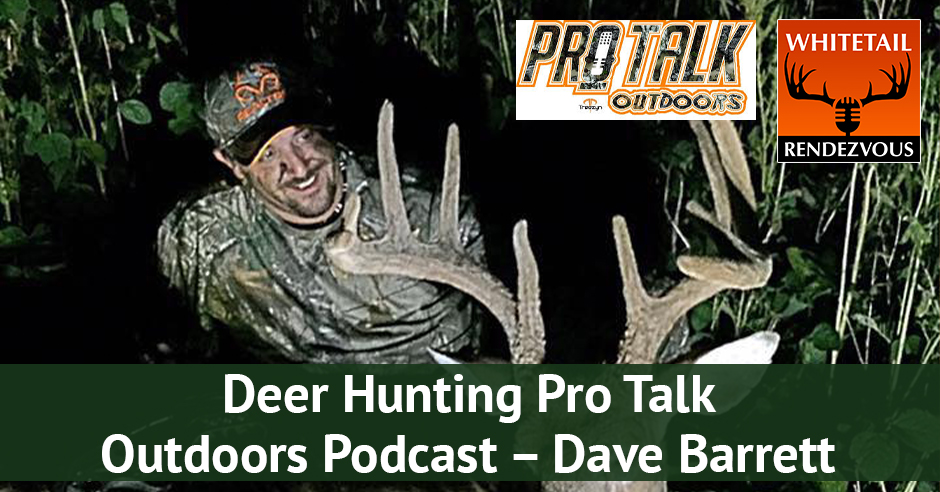
Social media has shed some negative light with some bickering back and forth from the outdoor industry. Dave Barrett, the CEO and Founder of Pro Talk Outdoors, shares their advocacy to promote the greater good of the outdoors and the hunting heritage to encourage conservation and hunter recruitment by creating online awareness. According to Dave, hunters are the biggest conservationists out there. If people look and listen long enough into it, they’ll see and surely respect what hunters are doing. He also tackles the use mineral supplements and food plotting in hunting land and the deer’s overall health.
—
listen to the podcast here:
Deer Hunting Pro Talk Outdoors Podcast – Dave Barrett
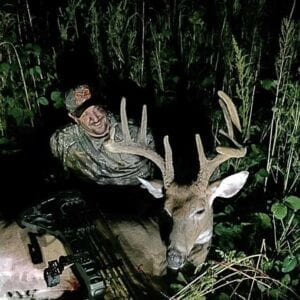 I’m up to over 530 episodes now. It’s been quite a journey so we’re kicking back with Dave Barrett from Pro Talk Outdoors and In A Rut on CarbonTV. Dave is big on conservation and hunting recruitment and we’re going to talk about that. Last time was his best time in the field where he took two mature bucks of over six-and-a-half years old. Having said that, welcome to the show. I’m excited to have my audience read about you and hopefully follow you on Pro Talk Outdoors.
I’m up to over 530 episodes now. It’s been quite a journey so we’re kicking back with Dave Barrett from Pro Talk Outdoors and In A Rut on CarbonTV. Dave is big on conservation and hunting recruitment and we’re going to talk about that. Last time was his best time in the field where he took two mature bucks of over six-and-a-half years old. Having said that, welcome to the show. I’m excited to have my audience read about you and hopefully follow you on Pro Talk Outdoors.
Bruce, thanks so much for having me on. I’ve been a fan of your show for quite some time. We share a lot of things with your audience and enjoy the outdoor hunt and these stories and information about whitetails.
Let’s just throw this out. Why did you start Pro Talk Outdoors? What was the beginning?
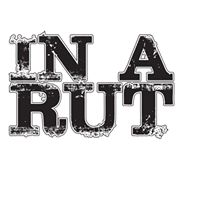 Pro Talk Outdoors was something that we wanted to get started to get some more information out there for people. I’ll admit that Pro Talk Outdoors was a selfish thing for me. I selfishly started the podcast because I wanted to be able to have conversations with people that I had a great deal of respect with and things that I could learn from. You’re talking about Mark Drury, Bill Winke, and Don Higgins. There are so many great names and people that we’ve had on our show. I’ve been able to learn a lot and I have a great deal of respect for them. That’s the beginning of Pro Talk Outdoors. As we’ve grown and started our show in CarbonTV called In A Rut. Our team has grown dramatically. We’ve got six or seven members now that are out there shooting a video for us all the time. I feel good about using our platform the way we have to promote conservation and hunter recruitment and just doing things the right way. In this day and age, you see with social media some negative light shed or the bickering back and forth within the outdoor industry. That’s the thing we want to squash. We want to make sure that we’re all working together and promote the greater good of the outdoors and our hunting heritage.
Pro Talk Outdoors was something that we wanted to get started to get some more information out there for people. I’ll admit that Pro Talk Outdoors was a selfish thing for me. I selfishly started the podcast because I wanted to be able to have conversations with people that I had a great deal of respect with and things that I could learn from. You’re talking about Mark Drury, Bill Winke, and Don Higgins. There are so many great names and people that we’ve had on our show. I’ve been able to learn a lot and I have a great deal of respect for them. That’s the beginning of Pro Talk Outdoors. As we’ve grown and started our show in CarbonTV called In A Rut. Our team has grown dramatically. We’ve got six or seven members now that are out there shooting a video for us all the time. I feel good about using our platform the way we have to promote conservation and hunter recruitment and just doing things the right way. In this day and age, you see with social media some negative light shed or the bickering back and forth within the outdoor industry. That’s the thing we want to squash. We want to make sure that we’re all working together and promote the greater good of the outdoors and our hunting heritage.
Mark Kenyon came out and had an Instagram post and he also followed that up on one of his podcasts the perception of hunting not from our eyes, but the people that are looking at us. We’re under the scrutiny. I sent Mark a little note and said, “The hunters’ perspective might not be the right perspective.” He chewed on that for a while. We’re all about what we know and we’re comfortable in our camo and all that, but other people look at us and go, “What’s up with these guys and gals?” It’s up to us to reach across whatever chasm there is and get people involved or have a conversation that’s meaningful and not, “You don’t hunt.” That’s the wrong way to start. “I love hunting. It’s part of my tradition. I’d love to talk to you about it. Let’s go have a beer. Let’s have a cup of coffee.” Have a conversation about why you like to hunt because people need to know why you like to hunt and not just seeing your pictures. The grips and grins are great.
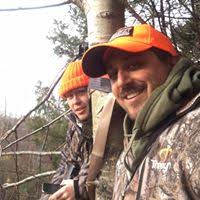 If you look at it like this, there is a very small percentage of people who go out and hunt and there’s a very small percentage on the other end of that I would call your anti-hunters. It’s the people despise everything that we do and don’t understand what we do. There’s that huge chunk of people in the middle that they’re indifferent. They’re influenced by what we do. Are we putting the best message out there to let them know about exactly why we hunt? We had Mark Drury on our show and he had said something to me that I found very interesting. He was talking about a conversation that he had with somebody that is very popular in social media. I don’t know who it was. I didn’t ask him the person’s name. We’re talking a million followers or so that didn’t hunt. They had no interest in hunting and had no background in hunting at all.
If you look at it like this, there is a very small percentage of people who go out and hunt and there’s a very small percentage on the other end of that I would call your anti-hunters. It’s the people despise everything that we do and don’t understand what we do. There’s that huge chunk of people in the middle that they’re indifferent. They’re influenced by what we do. Are we putting the best message out there to let them know about exactly why we hunt? We had Mark Drury on our show and he had said something to me that I found very interesting. He was talking about a conversation that he had with somebody that is very popular in social media. I don’t know who it was. I didn’t ask him the person’s name. We’re talking a million followers or so that didn’t hunt. They had no interest in hunting and had no background in hunting at all.
The guy asked Mark and said, “I don’t think that I’d be interested in going out and shooting an innocent animal.” Mark said, “You’re looking at that wrong. It’s not about shooting an innocent animal. It’s about feeding yourself.” That hit home with that gentleman because Mark is going to take him out hunting this fall and the guy is looking forward to it. I’m looking forward to seeing how that comes out. The whole point of that story being is that most of us eat meat. Most of us will go out and eat a steak at a restaurant or we’ll go through the McDonald’s drive-thru or we’ll go to the grocery store and we’ll pick something up. The thing is we have to take responsibility as hunters that we’re going out and we’re harvesting our food. That’s what it’s more about than anything.
You can’t lose by putting food in the ground for your wildlife. Share on XPeople on social media don’t see the end result. There are people that talk about it. Chef Derek St. Romain is a good chef. He’s got great recipes. He talks about the end product and the enjoyment of sitting down with friends and family and having a great meal from the venison. That provides a platform that we’re enjoying the hunt as much when we’re sitting down and having that meal as when we were out and hunting that deer or elk or whatever you’re harvesting. We’re hunters. The end result of hunting is eating the game. I say to people all the time, “Why do you hunt? I truly enjoy the journey and every aspect of it. It’s an adventure for me. Plus, the meals are outstanding.” Instead of going to the grocery store and pick up something wrapped in cellophane, I know where it came from. I know where it’s processed and I’m preparing it just the way I want to prepare it. I said, “It’s a whole experience. When you go and buy your steak, do you eat meat?” They said, “Yeah.” I said, “I can go back to packing that elk out as part of the experience.” The value of that meal skyrockets when you do that, in my opinion.
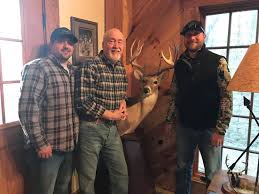 You mentioned a chef that you had on your show. We had Jeremiah Doughty on our show a couple of times. Jeremiah is a wild game chef. He does a fantastic job. I didn’t understand this or think about this from his standpoint. I’m going to get the figure wrong, but it was over 30 and maybe even over 60 different people or machines that touch the average piece of meat that you buy in the grocery store before it gets to you. If you think about all the hormones that are injected into this stuff, who knows where this meat came from. Did it sit on a loading dock for six hours before it got loaded onto a pull trailer to get to where you’re at? Who knows? When we go out and we hunt and we harvest this game, we know exactly where it came from. We were the hands that touched it. We took responsibility in harvesting our food and it makes that meal so much sweeter, not to mention just more organic and healthier whenever we eat it and we feed our family and friends with it as well.
You mentioned a chef that you had on your show. We had Jeremiah Doughty on our show a couple of times. Jeremiah is a wild game chef. He does a fantastic job. I didn’t understand this or think about this from his standpoint. I’m going to get the figure wrong, but it was over 30 and maybe even over 60 different people or machines that touch the average piece of meat that you buy in the grocery store before it gets to you. If you think about all the hormones that are injected into this stuff, who knows where this meat came from. Did it sit on a loading dock for six hours before it got loaded onto a pull trailer to get to where you’re at? Who knows? When we go out and we hunt and we harvest this game, we know exactly where it came from. We were the hands that touched it. We took responsibility in harvesting our food and it makes that meal so much sweeter, not to mention just more organic and healthier whenever we eat it and we feed our family and friends with it as well.
My friend Sam Ayres is living in the country. He lives in LA and works in Hollywood. He talks to people in LA all the time and he says, “I’ve got the best organic meat in the world.” They look at him and go, “Where do you get it?” He says, “I’m a hunter.” It just takes them back. It’s the original organic meat. Everybody is into organic because we want it pure. You can’t get it any better. You stated it. We know where it came from, we know how it was processed, and we know how it was prepared. That’s the perfect example. You and I are agreeing. If we had a person in the middle reading this, how would they be viewing this? I’ll throw that out. How do you think they’d be thinking about what we’ve been talking about?
If a person in the middle that’s indifferent and doesn’t have a preconceived notion about what hunting is and what eating wild game is all about. If you give them an honest explanation of why it is that you enjoy or I enjoy hunting or anybody has that conversation, you can introduce them to some wild game. Whether it would be some venison tenderloin, fried turkey nuggets, any freshly caught fish or anything that you’ve harvested out there and they can taste it, they can see your passion and what you’re about. They can see why you enjoy taking that responsibility of knowing where your meat comes from. I don’t think they can do anything but respect that.
I certainly don’t think that they can look at that in a negative light, especially with the argument of all the money that hunters as conservationists put back into all the public land access that we have. For the most part, bird watchers, they’re not putting the bill on keeping these public lands open and this access available to all of us. It’s hunters. Hunters are the biggest conservationists out there. If anybody listens long enough or looks deep enough into it, they’ll see that and they have to respect that. It’s not the anti-hunters that are going to support the wild game. We do more for wild game and the outdoors as hunters than anybody else does by far.
Educate yourself on some useful information and advice on what to plant and when to plant it. Share on XI know a couple of people that are professional birders and I once said to them, “Every time you buy a piece of camera gear, a portion of that goes to conservation. What do you think about that?” There was no comeback. I said, “Every single time I buy a piece of gear, it’s called the Pittman–Robertson Act. It’s distributed by the federal government to that states and there’s a formula for that.” I said, “Why aren’t birders included in that? You’re non-consumptive, I get that, but you’re using the same terrain that I am.” It’s exactly the same terrain, the same national forests, and they’re using all the public lands as I am, but they’re not supporting it financially.
That’s the conversation that needs to be happening with our legislative branch. It needs to be happening because it’s not just people that are out there bird watching. It’s hikers and people who are camping, supporting the funding and keeping these public lands open. That’s very important.
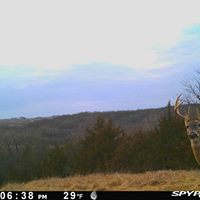 What Dave and I would say is get involved in the discussion of how to reach these middle people and how we all should be part of the solution on public lands. I know in Colorado in the national forests, we’ve got a big problem with weed growers. Colorado is one of the states that you legally can smoke pot. There are people going to national forests and becoming pot growers. British Columbia has had that issue for a long time. It’s a big cash crop up there. You can get far enough away within a quarter mile of a national forest road and you can have it grow that you’re going to make enough money to support yourself for a year. That’s the fact. We’ve got another thing coming that we all need to band together whether you’re a hiker, a bird watcher, a fly fisherman, camper or a hunter. We all are going to come into contact with these growers if you use public lands. There’s no question about it. It’s not if, it’s just when. That’s one thing I’m raising the flag about. People got to start becoming aware.
What Dave and I would say is get involved in the discussion of how to reach these middle people and how we all should be part of the solution on public lands. I know in Colorado in the national forests, we’ve got a big problem with weed growers. Colorado is one of the states that you legally can smoke pot. There are people going to national forests and becoming pot growers. British Columbia has had that issue for a long time. It’s a big cash crop up there. You can get far enough away within a quarter mile of a national forest road and you can have it grow that you’re going to make enough money to support yourself for a year. That’s the fact. We’ve got another thing coming that we all need to band together whether you’re a hiker, a bird watcher, a fly fisherman, camper or a hunter. We all are going to come into contact with these growers if you use public lands. There’s no question about it. It’s not if, it’s just when. That’s one thing I’m raising the flag about. People got to start becoming aware.
It’s good that you’re bringing that up, Bruce. Guys like myself out in the Midwest, we would never know that’s even an issue if it weren’t for people like you bringing it up and making it a conversation.
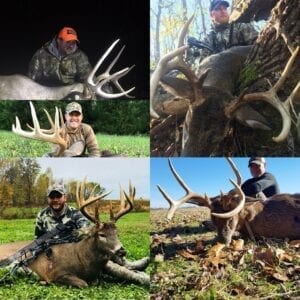 I remember I was sheep hunting. We were on a track on a forest “service road.” We came around the corner and there was a guy blocking the road. He didn’t have a shirt on, he had a pair of long shorts, high boots and a 9mm. I go, “What’s the issue?” He was like, “We’ve got a little situation here.” I said to my buddy, “Keep your eyes on his gun.” It could have been bad. It was just a shock and that’s exactly what he was doing. He did not want us to go up that trail. There was no question about it. You have to have situational awareness. I was like, “There’s nothing we’re doing here. I’m backing my truck out. We’re out of here. We’re going.” There’s no confrontation like, “I want to go up.” Get out of there because it isn’t worth where it could go. There are other guys that think, “I have a right to be there.” Why ruin your hunt? If you have a confrontation there, your hunt is over. A little recap of the first ten minutes of the show is reaching out to the people in the middle ground, you’re going to hear this. Mark Kenyon is well regarded in the industry. He’s a leader and he’s got a great voice. He’s sharing it, I’m sharing it and Dave is sharing it, but we’ve got to do a better job at this. Do you have anything more to add?
I remember I was sheep hunting. We were on a track on a forest “service road.” We came around the corner and there was a guy blocking the road. He didn’t have a shirt on, he had a pair of long shorts, high boots and a 9mm. I go, “What’s the issue?” He was like, “We’ve got a little situation here.” I said to my buddy, “Keep your eyes on his gun.” It could have been bad. It was just a shock and that’s exactly what he was doing. He did not want us to go up that trail. There was no question about it. You have to have situational awareness. I was like, “There’s nothing we’re doing here. I’m backing my truck out. We’re out of here. We’re going.” There’s no confrontation like, “I want to go up.” Get out of there because it isn’t worth where it could go. There are other guys that think, “I have a right to be there.” Why ruin your hunt? If you have a confrontation there, your hunt is over. A little recap of the first ten minutes of the show is reaching out to the people in the middle ground, you’re going to hear this. Mark Kenyon is well regarded in the industry. He’s a leader and he’s got a great voice. He’s sharing it, I’m sharing it and Dave is sharing it, but we’ve got to do a better job at this. Do you have anything more to add?
I would like to talk a little bit about hunting using some mineral supplements and food plotting. It’s probably relevant to people in the Midwest.
As far as the middle ground thing, do you have anything more to add to that?
That’s something that we all need to be involved in and it’s something we can all make an impact on whether it’s somewhere we’re at. It could be out to dinner, it could be a bar, it could be at the kid’s baseball game or something and somebody recognizes the fact that you’re a hunter. Portray that in a positive light. Be careful of how you choose your words. Don’t say, “I’m out there to shoot everything I can because I like to kill things.” Present us in a positive light because you, in a sense, represent everyone that goes out and hunt. You represent our hunting heritage at that point of time with that person that’s listening to you.
Dave just introduced the next segment. He lives in the Midwest and food plots are a big part of it and hunting small parcels. Let’s jump right into it. What part do you want to take first?
We have to take responsibility as hunters that we’re going out and we're harvesting our food. Share on XI hear a lot of people bring up the concern about not being able to manage their hunting property like, “I can’t food plot,” or “I can’t make sure that I’m doing things that are good for my deer herd by putting mineral out.” Whether or not it’s an issue that you just have such a small parcel and you feel like you can’t control what deer live and what deer die. A lot of guys in my area, they’re hunting twenty-acre parcels which are so tiny when you think about how big some of the properties are out west. They’re concerned about, “If I pass this two-year-old buck up or this three-year-old buck up, my neighbors are going to shoot them.” That very well may be the case, but there are so many things that can be done by us as land managers to try to improve our properties and to try to make sure that you’ve got some of those deer that make it through so you can kill a more mature deer.
If I own a twenty-acre property and I called you up and said, “What do you think if on one side I’ve got people that are QDMA thinking people and the other side they’ll shoot everything from fawns on up. It’s on their land and they’re legal so they can.” It depends who’s on their land and the fourth person doesn’t hunt at all.
I want to preface this by saying there is nothing wrong with the guy that wants to go out there and shoot the first legal deer that he sees. I support that 100%. If that’s what your goals are and you’re just out there to enjoy the time out there or you want to harvest an animal to feed your family, I support that 100%. Best of luck in doing that. The thing I hear often is guys that say they want to kill that mature deer, but year in and year out they’re killing that year-and-a-half old or that two-and-a-half-year-old deer because they’re concerned about their neighbor killing that deer. Your neighbor can’t kill that deer if you shoot it yourself. There are so many things that you can do to enhance your own property, even if it’s a small parcel to make that deer want to spend more time on your property.
Where it’s legal, you want to do some supplemental feeding and put out a good quality mineral. There’s an attractant. Some of them are doing good things for the deer herds health. We prefer to use Real World Maximizer Plus with Expect Healthy Deer Technology. It’s got a lot of probiotics in there. It’s got a lot of good things for the deer’s overall health. We use that throughout the summer months. With food plotting, you can come up with a good strategy to have food year-round. Even on a small parcel, even if it’s two acres of food or three acres of food, there are so many things you can put out that’s going to help keep those deer on your property more often than not and not run over to your neighbor where they may get shot.
Think about it. If you’ve got a guy in QDMA, he’s doing everything to grow his herd. He’s trying his best. Let’s say the neighbor is to the north. The neighbor to the east will shoot because he’s got a large family and he wants to eat deer. The guy in the south will show up but they’re more social hunters and they might hunt or they might not. You have the guy that doesn’t hunt at all. The guy to the west is the sanctuary. The guy to the north is a grower deer. The guy to the east is a consumer of deer. You just don’t know what the guy to the south is, but he’s not enhancing his habitat. You’ve got three sides of you that are helping you do what you want to do. You’ve got three-quarters of the equation to your favor and people don’t think about that, in my opinion.
It all comes down to what does a whitetail need. A whitetail needs security for cover, they need food and they need water. They want to feel safe. That’s the main thing. It goes above and beyond planning and making sure you have food there and making sure you have a cover. It also means you’ve got to do the right things when you’re hunting those deer. You can’t just go hunt every day on a twenty-acre parcel of ground and expect those deer to stay there. You have to pick your days that are correct where you can get in there easily and get out of there easily with the right wind direction so that you’re not running those deer out of there. If you bump a mature deer one time off of a piece of property in the fall, there’s a good chance that you won’t lie eyes on that deer again on that piece of property. He’s going to go over there and the neighbor may shoot it.
Going back on these small parcels, how do I set up my crops? I believe that you should have something available to the deer that’s legal 365 days a year. That’s what I believe. How do we do that? How do I do that out on my twenty-acre parcel?
Here’s what we’ve done in the past and it’s worked well. Let’s just assume that you have a couple of acres that you can clear. Whether or not you own it or lease it, it’s something that you can plant or the owner or the farmer has given you permission to do something with it to enhance the property. It’d be nice if you can have some clover and chicory or something that is going to start growing early in the spring so those deer are eating something palatable. Even before you start getting any kind of green up around, you want to have something there for them to eat. You don’t want to have all clover because once you get a good hard frost, it’s not as palatable for those deer.
It’s good if you can put out something like soybeans. Soybeans are fantastic late in the season and if you can get them to a mature stage where there are a lot of pods there, the deer will eat on those all the way up until springtime hits the following year. We like to use a lot of soybeans on our properties and when we can, we’ll go back in late August or early September depending on where you’re at geographically. We’ll plant something that has more different seed types that are going to be something that they’ll want to get when it’s warmer out. I’m talking about your greens, your brassicas, and those type of things with oats or any kind of wheat. Your clovers are going to be there as well. In that way, if you’ve got a warmer day where a whitetail is not going to want to eat soybeans, I’m talking about the grain stage and not the greenery part of the soybean. Those put off a lot of heat. There’s a lot of oil content in soybeans and that makes the deer warmer. On those colder days, they’re going to want to hit those soybeans, but on the warmer days, you’re more apt to see those deer feeding in the greens. It’s important to have both greens and grains available in the fall if you want to keep those deer on your property.
When you think about your radishes in late fall or winter-type food, when do you plant them, so they’ll carry over, they won’t get hammered and they’ll be available when the deer needs those carbohydrates?
Every seed is going to be a little different. There are 30 different types of turnips out there that you could plant. We’re partnered with Real World Wildlife Products and we like using their stuff because it’s been tested a lot. They’ve tested tissue samples at different stages throughout the fall in cooperation with temperature level drops. They know when those things are more palatable for the deer and that’s the important thing. I’m in Southern Indiana so I’m going to want to plant my fall plots that are going to incorporate the turnips at the very end of August or the first week of September. Hopefully, you can plant that before it rains so they get a good start. If you plant those things too early, they will mature so fast or they’ll mature at a rate where they won’t green back up the next spring. If you play that game right and you plant it late enough, it won’t go to seed in the fall so you don’t have to worry about it dying off. It will green back up the next spring and much like clover, it’s a good food source for the beginning of the following year. It gives those deer a good kick start and has them some nourishment there that otherwise they wouldn’t have.
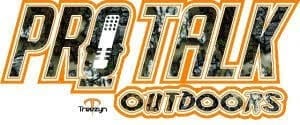 It isn’t an easy thing. There are a lot of seed companies, but don’t go to big box stores and buy the seed off the shelf unless you know exactly what you’re doing. You can read that label and say, “This is what I want.” The deer knows exactly what they want to eat and when they want to eat it. It’s a science and it’s how their body can digest it. The deer in Northern Wisconsin has been going to deer yards forever and they’re 100% on browse. That’s all they’re on. They’re just on browse and that’s how they carry this through. The rest of the year, they move from here to different food sources. You have to become a student.
It isn’t an easy thing. There are a lot of seed companies, but don’t go to big box stores and buy the seed off the shelf unless you know exactly what you’re doing. You can read that label and say, “This is what I want.” The deer knows exactly what they want to eat and when they want to eat it. It’s a science and it’s how their body can digest it. The deer in Northern Wisconsin has been going to deer yards forever and they’re 100% on browse. That’s all they’re on. They’re just on browse and that’s how they carry this through. The rest of the year, they move from here to different food sources. You have to become a student.
I finished QDMA Deer 1 Stewardship. I’ve only been hunting deer for 52 years and it was like, “Are you kidding me?” It’s a great class. If you’ve never taken it and if you’re serious about learning about deer and what the deer needs, it’s a wonderful class. The deer will go and they know what they need when they need it. It doesn’t matter what you have planted. You have to ask other people, “Where’s the science behind this?” It isn’t just grabbing clover and throwing it out type of stuff. Be strategic. The better you are, the more the deer are going to say, “This has everything I need for every season of the year.” To me, that’s the key. It’s providing the deer what they need when they need it.
Educate yourself on what is the best feed for the deer at different points in the season. Do a lot of research on that. If you’re going to these big box stores and you’re looking at the seed, read those seed tags. There are so many tags. They’re going to tell you exactly the percentage of the seed in the bag. If you’ve got 40% of inert matter in that bag, that means you’re only buying 60% of that bag as seed. Educate yourself, know what to plant, and when to plant it. There’s so much information out there. You can get online and go to a reputable website or a Facebook page that’s got a lot of knowledgeable people on there. The one that I get on often is Habitat Managers on Facebook. There are a lot of people on there that know what they’re talking about. They can give you some good information and good advice on what to plant and when to plant it
Land & Legacy are good friends of mine, Adam Keith and Matt Dye. They have good information and they’ll answer your questions. If you’re not on the message boards or on social media or around people that are sharing information, find them. If you’re serious about increasing the healthy herd, you don’t have to hire somebody to do it. You don’t have to hire Land & Legacy to do it. There are people that are working and they don’t have the time so they hire those guys and say, “Figure it out for me because I don’t have the time to do it.” There’s a rising business where guys will go in and custom food plots and custom harvesting. They’ll come in and manage your land the whole year so you don’t have to go out, buy the equipment and do the whole thing. If you put a pencil to it plus your time, that isn’t a bad idea. It’s not a bad way to go. A lot of guys are farmers and I’m not. I’ve made so many mistakes with food plots and now I’m working with the guy that I hunt. I’m getting his son and different people to say, “I’m stupid. I just don’t know this because I grew up in Long Island, New York. Give me a break.”
There’s a learning curve there and you’re not going to have the perfect food plot the first year out. It doesn’t have to look beautiful. It doesn’t have to look like an agricultural field or anything like that. The number one point of the whole thing is to feed your wildlife. That’s what it’s out there for. I’ve heard guys complain about, “I put this food plot out and the deer ate it down. I didn’t even get a hunt over it.” You fed the wildlife. You made a positive impact on your deer herd. Find something else to plant and follow that up so they have something to eat in the late season. I mean it’s a win-win. You can’t lose by putting food in the ground for your wildlife.
Anything that germinates is good. If it doesn’t germinate, you just put $2 on the ground.” Let’s face it. If it germinates, then something positive happens even if you didn’t hunt over your food plot. You fed the turkeys, squirrels, rabbits, grouse and the deer. That’s not all that. Let’s switch it up. Let’s talk about your season when you’re on a mission and you killed two mature bucks. More and more people at QDMA will tell you that there’s a tick upwards to let go and let grow type of mentality where people are letting the deer go and see what’s going to happen next year with them. A six-and-a-half-year-old deer is a tough deer to harvest. In my experience, once they hit three-and-a-half years old, you better know your stuff. They’ve seen it all and they’ve survived it all. The only reason they’re that age is that they’re smart.
Bruce, I didn’t have a great year. I was hunting in a new property in Kentucky and worked our tails off. I can’t take complete credit for this. The group that was hunting on the farm with me, we did a great job of putting out food plots, run in mineral sides, good reconnaissance with our cameras. We located some mature deer and probably the oldest buck in the group. A buck that I called Rhino came in on me the very first day that I hunted. That was the first day I was able to align with the right wind direction. He came in and gave me a great shot. It was a seven-and-a-half-year-old deer, 150 inches and full velvet. It was a great hunt. It’s one I’ll never forget.
In Indiana, I had a buck that was six-and-a-half that lived well. I had pictures that he was three-and-a-half on up. I thought maybe he had got harvested year prior because I had no pictures of when he was five-and-a-half. There were no sightings at all, but it was something to do with the crop rotation. He just wasn’t there. He went somewhere else. We had a picture when he was four-and-a-half. My brother has a farm that’s a mile away from me. He got pictures of this deer when he was four-and-a-half and six-and-a-half on the same day off of the same camera and the same tree. I got pictures of this deer when he was four-and-a-half and six-and-a-half during the same week timeframe in the first week of November on the same ridge. We even named the ridge after we had a stand there and called it Curly Ridge. We were cursed with a whole bunch of east winds this past fall and that first week in November. I couldn’t get in there and hunt him even though I knew he was there. He lit up my camera every day. He was running that ridge consistently. The fourth thing was I had the same beans still planted and we got a good cold snap consistently.
When you think about those two deer, the biggest thing that came to me is that you’re determined not to blow it. Once you blow one of these bucks, they’re gone.
The things that I’ve learned from other guys that are way more successful in the outdoors that I am is that I would rather have one day a year if it’s the right day in the right conditions. I would go out twenty times and do it in subpar conditions or do it with questionable wind directions. The big year just doesn’t move. There are those days if you’ve got a high-pressure system and you’ve got the right wind direction or a good cold snap. Something triggered those deer and gets them on their feet, those are the days that I want to key on and hunt. I don’t want to go in and risk it. You put a lot of effort into these deer. Whether it’s in the summer, you start looking for sheds the previous year and you’re running cameras. You’re feeding them in the summer and you’re figuring out exactly where they’re at and create stands. Why risk going in a sub-par situation. You don’t have the right wind direction, you’re going to screw it up so I’d rather make that 100 counts in both situations.
I’ve got a friend, Jeff Helmers in Wisconsin, he hunts three days a year on 40 acres.
That’s smart because on a 40-acre parcel, it’s hard to get in there and hunt a lot without blowing it out.
He’s got all different types of people around him, but now he has 40, he kills mature bucks every year whether there are three-and-a-half, four-and-a-half or five-and-a-half years old. It’s because of that, then it becomes that security place and the sanctuary all the rest of the year. He doesn’t gun hunt it. He only archery hunts it. Let’s tell people how they get ahold of you. Let’s talk about how to reach out to you, how to contact you, and how to get on your show.
We’ve got a website, ProTalkOutdoors.com. We’re on Facebook at Pro Talk Outdoors and on Instagram as well @ProTalkOutdoors. I’m on Facebook, Dave Barrett. You can look me up on Instagram as well. We’ve got a show called In a Rut on CarbonTV. We appreciate anybody checking that out. We’ll be releasing season two for the fall. We had a successful turkey season, so we’ll be releasing that stuff sometime after the whitetail season is over.
Let’s get to the conservation and hunter recruitment. Let’s spend the last part of the show talking about those things because I know you’re a big proponent of conservation and hunter recruitment.
Any chance I have with a platform, with podcasts, videos or anything that we want to talk about. Those are the important things. It’s something that a lot of people take for granted because we’ve been able to hunt for years. The given fact is that the hunter numbers are dwindling. If you look at a few years ago, 7% of the public hunts and now we’re down to about 4%. We’re becoming a smaller part of that minority and we have to make sure that we’re representing ourselves in the correct way. Hunting recruitment is huge. There’s something that I learned when we did a podcast with Mark Drury. He met with the Missouri Department of Natural Resources and they brought up hunting recruitment. They were talking about the youth and that it started taking advantage of the youth season hunting, which a lot of states do a good job of getting the kids out there first and giving them a good opportunity. It’s something that they get to talk about. I find out that by and large, the majority of these kids that are going out in youth season hunting, whenever they’re not eligible for the youth hunting anymore, they just disappear.
They’re not going back and purchasing a license. They’re doing it on their own. If they don’t have a mentor taking them out hunting, they’re giving up. They’re not participating anymore. We have to do a better job of making sure that we’re not taking these kids out on canned hunts and setting them up. We need to do a better job of getting them involved with the entire process. Let them go out and help us put out mineral, food plots, pick trail cameras, set up tree stands and ground blinds. Let them know the entire process so they have a little bit better understanding of what it’s all about. They have more ownership of that success than just showing up on the day of the hunt and pulling the trigger. That would help out a huge deal.
You and I are 365 hunters. We’re talking about it. We’re engaged in it or listening to somebody talking about it. We’re engaged in the process. It’s important to make sure the people that we’re mentoring or you’re bringing along that they see the whole process.
A lot of it goes back to the day and age wherein in our educational system, every kid gets a ribbon. If you’re going to invite one to the birthday party, you’ve got to invite the whole class. Everybody is entitled. We’re raising an entitled generation right now. If we make sure those kids are earning their success in the outdoors, they’ll appreciate it a whole lot more. That’s not meant to discourage anybody or anything. I do think we have to do a better job of letting these kids appreciate the entire hunting experience and not just going out there and sit in the blind on the day they hunt.
I’m talking to the guy named Chris Joe down in Alabama and he’s going to start doing things with his farm. They’re ranchers and farmers down there and they want to get involved with youth recruitment. That’s his thought. They’re going to see the whole process. It isn’t just to invite them out, make sure they get the tag, hunter safety and all that. They go on the stand to shoot a deer, but they don’t see why the deer is there. They don’t realize how that deer got to be in that bean field. Chris Joe, The Adventure of Breeze, that’s the name of his organization. He’s getting started and he reached out to me. He was on my show and he reached out to me so I’m trying to help him. I got in touch with the University of Montevallo and William Crawford down there in Alabama. They’ve got outdoor scholars with a full credit cost curriculum. It’s growing the leaps and bounds because they’re helping kids understand the whole process. They’ll graduate with either a degree in biology or wildlife management, so they’ll get a four-year degree. They’ve seen the whole process and it’s in both classroom and experiential. It’s a great way to take some kids who want to be in it, not just in wildlife management, but want to be in the whole process to teach other people how to enjoy the whole process.
Hopefully, that catches a little bit.
It’s just going great. William Crawford is the guy you need to get ahold of at the University of Montevallo.
That’s what we need to be paying attention to as far as hunting recruitment goes. I feel strongly that there are so many things that we can do as an outdoorsman, but we’re not doing a good enough job. It’s not a financial thing necessarily. It can be an effort going with the Pro Talk Outdoors and just going out to a private piece of property. There’s a lot of trash to be picked up out there. Whether or not it’s close to a roadside, people are literally throwing stuff out. It doesn’t take much time or effort to do that. Speaking from experience, I feel a whole lot better about myself after I get done working on a piece of state property or federal property. I’m cleaning up and helping out the environment.
I’ve had a great time with Dave with Pro Talk Outdoors and we touched on a lot of things. We touched on meeting people on middle ground. We’ve touched about how to manage your twenty acres land and up and also about conservation and recruitment. Dave, do you have any final thoughts?
Stay involved. Get out there and enjoy the outdoors. At any point in time, reach out to me or anybody with Pro Talk Outdoors if you have any questions, anything you’d like to hear on the show, or anything that we can help you out with. We’d be more than happy to help out in any way we can. That’s why we do this. We don’t do it for fame or fortune because we don’t have either one of those things. We enjoy talking to people in the outdoors. Reach out to us. We’d love to hear from you.
It’s been a pleasure to have you on and I can’t wait to have you on again because you’re my type of people.
Bruce, I love catching up with you and seeing what’s going on. I’m always one call away.
important Links:
- Pro Talk Outdoors
- Mark Drury – Pro Talk Outdoors past episode
- Chef Derek St. Romain – Past episode
- Jeremiah Doughty – Pro Talk Outdoors past episode
- Sam Ayres – Past episode
- Real World Maximizer Plus with Expect Healthy Deer Technology
- Real World Wildlife Products
- Habitat Managers
- Land & Legacy
- ProTalkOutdoors.com
- Pro Talk Outdoors – Facebook
- @ProTalkOutdoors – Instagram
- Dave Barrett – Facebook
- The Adventure of Breeze
- Chris Joe – Past episode
about dave Barrett
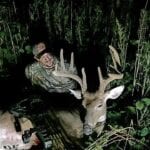 Dave has a true passion for the outdoors and sharing it with others. He is driven more by the pursuit and camaraderie than the harvest. Dave loves the yearlong journey from post-season scouting, to the planting of food plots, chasing turkey and bass fishing, and especially the thrill of big whitetail bucks and the chess match in chasing them.
Dave has a true passion for the outdoors and sharing it with others. He is driven more by the pursuit and camaraderie than the harvest. Dave loves the yearlong journey from post-season scouting, to the planting of food plots, chasing turkey and bass fishing, and especially the thrill of big whitetail bucks and the chess match in chasing them.
